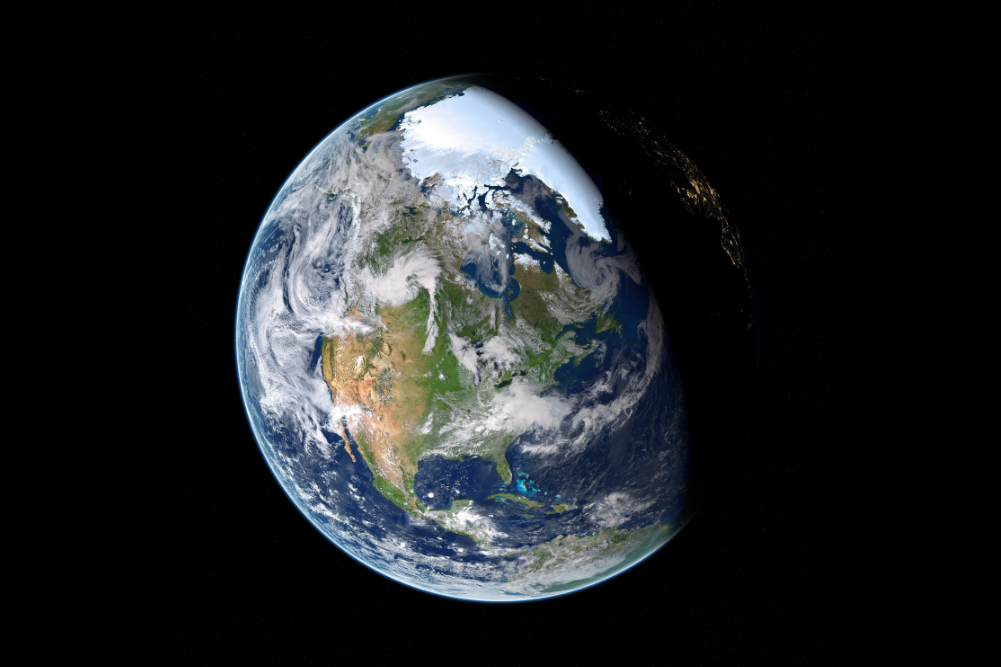What is deep ecology?
“Deep ecology is asking the deeper questions.” ~ Professor Arne Næss
“Deep ecology” dissolves the central delusion of separation between humans and Earth. It is an experiential philosophy. That is, it’s something you can experience, not merely philosophically understand or cognitively “get”. Deep ecology is a perspective wherein you become immersed in the awareness of how the environment is integral to your existence. It continually shows us the interconnection of all things and that humans are just one strand in a profoundly complex and beautiful web of existence. It has been called “a biological experience of religion”.
Arne Næss, a professor from Oslo University in Norway, is credited with coining the term “deep ecology”. He was deeply motivated by Rachel Carson’s 1962 book A Silent Spring, a title that alluded to a springtime when no birds were chirping because the effects of pesticide pollution rendered them unable to reproduce. Næss was also influenced by Mahatma Gandhi’s earlier success in triggering Indian independence through non-violent direct action.
Næss articulated how our environmental crises are the sum result of an error in philosophy. A collection of unspoken assumptions and attitudes condone, and often encourage, the use of Earth and all its resources for the primary benefit of the human species. This erring ideology disassociates humans as being independent from the rest of the Earth and its ecosystem. Or, as biologist Professor Paul Ehrlich put it, we’re a part of the tree of life and “we’re sawing off the branch we’re sitting on”.
This way of thinking has paved the way for massive destruction, pollution and the annihilation of species and habitats worldwide. It has created an army of what John Croft, an Australian eco-activist and consultant in the field of ecologically sustainable community economic development, has called “ecopaths”, hell-bent on attaining human gain regardless of ecological destruction.
Environmental activist and founder of the Rainforest Information Centre, John Seed, recounts how, in the 1970s, he believed that by making people aware of forest destruction everyone would agree that we should stop doing it. After a few years of successful campaigning, saving wildernesses such as the Franklin River Catchment, he realised that, regardless of a rise in awareness, the actions didn’t change and forests kept getting destroyed. He realised it’s our way of thinking behind the actions that is fundamentally the issue.
We’re all interconnected
Deep ecology helps to clarify awareness of our total dependence on water, air, bees, microbes, trees and indeed all Earth beings, as well as the entire ecosystem and cosmos. In many ways it is a combination of the thinking of systems theory, Buddhist philosophy, subatomic physics, Gaia, complexity and chaos theories, which accesses a new paradigm of thinking. It removes the human-centred biases we are entrenched in and frees us to live in acknowledgement of our utter interconnectedness. It brings us into experiencing life in this way.
Scientist James Lovelock articulated the Gaia theory in 1989. This theory recognises the Earth as a living entity; humans are just cells of this organism. Contemporary science research is regularly making discoveries that reveal the intricate relationships of natural ecosystems and a sophistication that is both mind-blowing and breathtaking. There is no way humans could ever hope to create anything similar.
Deep ecology helps us recognise that the environment is us and we are utterly interconnected and dependent on it. One of my favourite deep ecology comments to emphasise this relationship is, “If you are in any doubt about our interconnectedness with the planet, hold your breath for 10 minutes while you think about it.”
The study of ecology is the understanding of the web of life, from an intellectual level. We understand the food chain and how we stand at the top of it. This is referred to as superficial or shallow ecology. It comes from an anthropocentric (human-centred) perspective, as this type of ecology understands how important nature is in relation to the survival of humans. For example, a forest has value for its medicinal plants to cure humans, timber resources for human constructions, oxygen production for humans to breathe and the animals that humans can eat or keep for amusement.
This human-centric perspective has significantly contributed to the global catastrophes we are now facing, which are also referred to as the “sixth extinction” process in view of the five mass extinctions of species in Earth’s history. As John Seed describes it, “We’re running down the aisles of a train hurtling towards a crash, thinking that might save us. We need to stop and get off the train.”
Currently, 200 species become extinct a day, says Seed. Much of this extinction is due to ongoing deforestation that wipes out unique ecosystems and the critters that lived in them, many of which have not been “discovered” yet. Issues such as climate change, ocean acidification, the Great Pacific Garbage Patch, desertification, the dead zones, loss of 90 per cent of big fish from the oceans and “empty forest syndrome” are the consequence of the perspective that Earth is here for human preferential use and exploitation, suggests Eileen Crist, associate professor of science and technology at Virginia Tech in the US and co-editor of Gaia in Turmoil: Climate Change, Biodepletion, and Earth Ethics in an Age of Crisis.
Deep ecology challenges humans to step out of their “normal” perspective. Arne Næss proposed that the concept of developing our “ecological identity” is what’s needed. That is, rather than recognise ourselves within our social network or from an egoic, personality perspective, we come to develop an identity within our ecological network, as identities within the whole environment. We are but one strand in a complex web of life.
UK activist and author Satish Kumar, the recognised founder of deep ecology, takes deep ecology a step further and enters into “reverential ecology”, where we recognise all of nature as sacred and divine. Each of the 8.4 million species on Earth has a right to live, suggests Kumar. Kumar’s religious background is the Jain tradition. Jainism honours all life forms, strives to not harm or degrade life forms and deeply cherishes the intrinsic value of nature. Reverential ecology recognises nature as divine, the home of God. It has mutuality, reciprocity and interdependence and is creative, according to Kumar.
Deep ecology includes ideas that are held sacred by indigenous people around the world, most notably, that the Earth is our mother — the source of our physical selves and the provider of all nourishment and life. Globally, indigenous cultures celebrate the Earth on a regular basis with rituals to acknowledge and honour the sacredness and value of the Earth. Regularly returning to this honouring, they simultaneously live harmoniously within it.
Traditional indigenous cultures have ingrained sustainable processes that acknowledge the importance of all beings (not just humans) and enabled them to exist in harmony with the planet for untold thousands of years. Western civilisation, and in particular the market-capitalist system, has managed to significantly damage Earth systems within a few short centuries. Market growth is the aim, in which waste has been encouraged and a disposable culture has grown.
How is it that we are only now recognising that “away” doesn’t exist? It’s all Earth. Economics, which has essentially steered the planet to our current juncture, considers the environment an externality, defined as “a cost inflicted on the environment, not borne by those who inflict the cost”, which illustrates these human-centric ideas.
Deep ecology’s thinking is starkly contrasted with the mainstream thinking that propels the market-capitalist system. Deep ecology is not about competition, but collaboration and co-operation. It is not about gaining power over, but being empowered. It is not about survival of the fittest, but about survival through our interconnection and acknowledgement of support.
Deep ecology recognises the Earth as home to billions of different species, not as the resource supplier of the human species alone. As more people come to understand this, we begin to ask, how do we get off this train?
The development of deep ecology processes was initially driven by the needs of exhausted and forsaken environmental activists. Often despairing at the lack of change, or change in the wrong direction, many activists (myself included) experienced burnout or a sense of helplessness and utter despair. Today, with greater communication revealing the extent of ecological destruction, all people (possibly ecopaths excluded) could benefit from deep ecology processes.
Deep ecology processes
Deep ecology processes and exercises create space and states that shift the Western mindset into a new paradigm. They challenge the human-centredness of our way of life and crack into the strong love of the planet we all hold deep in our hearts. They allow us to grieve what has been done in our ignorance and they help us see a way forward and inspire us to head in that direction.
You can access all deep ecology processes online (rainforestinfo.org.au/deep-eco/processes.htm and joannamacy.net/theworkthatreconnects/newpractices.html). Many are recorded in Joanna Macy and Molly Brown’s book, Coming Back to Life. Here are some examples of what these processes involve.
The Earth as a peppercorn
Guy Ottewell designed this outdoor walking activity to illustrate the vast scale factor of our solar system using a mere peppercorn to represent the size of the Earth. Walking through the solar system provides you with perspective of your place in it, your galaxy and the universe.
Truth mandala
This ritual exercise provides a simple, respectful, whole-group structure for owning and honouring your pain for the world, and for recognising its authority and the solidarity it can bring. It provides space for fear, sorrow, grief, anger, longing, emptiness and hope to be expressed and witnessed.
Breathing with the trees
A breath meditation focusing on the exchange that occurs between you and the plants around you.
Corbett
A group process for four people to workshop how each individual will move forward, considering it from a range of perspectives.
Why is deep ecology important?
“The greatest part of the soul lies outside the body … treatment of the inner requires treatment of the outer.” Hippocrates
Even if you don’t perceive yourself as a “greenie”, environmental health directly affects individual health. Despite Rachel Carson showing how pesticides affected the reproductive function of birds over 50 years ago, there is little public awareness relating the declining levels of human fertility with agrichemical food production practices. Slightly less hidden from public discourse are how toxins contribute to obesity and early puberty, and how the combined effect of all pollutants on the planet had been suggested to have reduced the average human IQ by one point.
With the bees dying from pesticides and threatening our food supply due to their role in pollination, our reliance on the embroidery of life is becoming alarmingly evident. As a planet with global communication capacities, we by and large are still putting our heads in the sand about many developments that are leading the planet into a grave uncertainty.
As Canadian academic and environmental activist David Suzuki suggests, it’s as if “we’re in a giant car accelerating towards a brick wall and everyone’s arguing over where they’re going to sit”. Or perhaps we’re more tied up with getting our kids to school than in the world they will graduate into.
Buddhist and deep ecologist Joanna Macy calls our time “the great turning”. It’s a pivotal position for the human race. We can learn from Einstein that “no problem can be solved from the same level of consciousness that created it”. Superficial, Band-aid solutions won’t resolve the deep-seated nature of the problems. We need to change the way we are thinking and move forward from there.
Action is needed, not just awareness. Macy’s new book with Chris Johnston, Active Hope: How to Face the Mess We’re in Without Going Crazy, details how we move from here. In short, she suggests we first develop gratitude for life, then we acknowledge our pain for the Earth so that we can see with new eyes. From this perspective we nurture inspiration and develop plans for moving forward.
As equal cells of Gaia, we all have a role to play and we carry a gift for all of humanity to benefit from. Deep ecology provides a pathway to recognise and claim each individual’s role and act it out and carry it forward into tomorrow.
“Deep ecology is a spiritual gift! It is perfect and harmless. However, when you apply perfect spiritual energy to a mind that has been conditioned to know fear and pain and all kinds of negative things, then the conditioning is exposed and you can let go of it. You can let go of human misery and be a free and natural person. Your human personality can be filled with serenity, joy, health and spiritual wisdom. Deep ecology delivers more of these things than we can possibly promise.” ~ John Croft
Deep ecologists, activists & authors
Many people are involved in and continually contribute to the deep ecology movement. Here are just a handful of activists and writers.
| Deep ecology pioneers | Description | Books |
| Joanna Macy | Long-term Buddhist and deep ecologist from the US |
Coming back to life — Practices to Reconnect Our Lives, Our World, Joanna Macy and Molly Young Brown
|
| Professor Arne Næss | Norwegian professor who developed the concept of ecological identity | |
| John Seed | Australian environmental activist who runs regular deep ecology retreats in Australia (See rainforestinfo.org.au) | Thinking Like a Mountain, John Seed and Joanna Macy |
| Satish Kumar | Recognised founder of deep ecology | You are, therefore I am |
| James Lovelock | Environmental scientist who developed Gaia theory | The Ages of Gaia |
Did you know …
Earth is not signified by a capital letter in the English language (like capital cities are) but rather with a small letter: “earth”. This diminution of our planet within the structure of language is just one subtle example of the way of thinking that has created the ecological collapse that looms in the not-too-distant future. As a contribution to the paradigm shift, in this article and throughout WellBeing magazine, we’re choosing to use a proper noun to describe our planet and thus write “Earth”. (Lower case “earth” is soil.)
Sally Mathrick is a practising naturopath and workplace wellness facilitator. W: soundmedicine.com.au, sparklewell.com.au. Sally has been one of many co-facilitators of deep ecology retreats with John Seed. Find out more at rainforestinfo.org.au.







